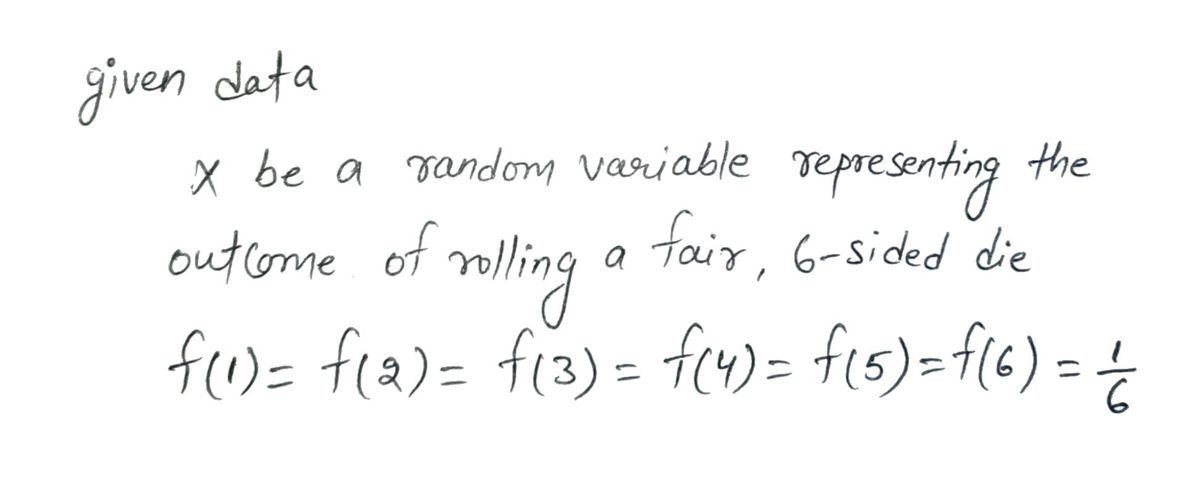Exercise 5. Let X be a r.v. representing the outcome of rolling a fair, 6-sided die: f(1) = ƒ(2) = - = f(6) = 1/6. (a) Verify explicitly that E(X) = 3.5. (b) Calculate E(X²), and verify that E(X²) is not the same as the square of E(X).
Exercise 5. Let X be a r.v. representing the outcome of rolling a fair, 6-sided die: f(1) = ƒ(2) = - = f(6) = 1/6. (a) Verify explicitly that E(X) = 3.5. (b) Calculate E(X²), and verify that E(X²) is not the same as the square of E(X).
A First Course in Probability (10th Edition)
10th Edition
ISBN:9780134753119
Author:Sheldon Ross
Publisher:Sheldon Ross
Chapter1: Combinatorial Analysis
Section: Chapter Questions
Problem 1.1P: a. How many different 7-place license plates are possible if the first 2 places are for letters and...
Related questions
Question

Transcribed Image Text:**Exercise 5.**
Let \( X \) be a random variable representing the outcome of rolling a fair, 6-sided die: \( f(1) = f(2) = \ldots = f(6) = 1/6 \).
(a) Verify explicitly that \( E(X) = 3.5 \).
(b) Calculate \( E(X^2) \), and verify that \( E(X^2) \) is not the same as the square of \( E(X) \).
Expert Solution
Step 1

Step by step
Solved in 2 steps with 2 images

Recommended textbooks for you

A First Course in Probability (10th Edition)
Probability
ISBN:
9780134753119
Author:
Sheldon Ross
Publisher:
PEARSON


A First Course in Probability (10th Edition)
Probability
ISBN:
9780134753119
Author:
Sheldon Ross
Publisher:
PEARSON
